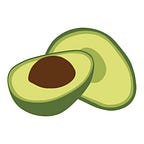We are proud to announce the GA 1.0 release of the ArangoDB-DGL Adapter!
The ArangoDB-DGL Adapter exports Graphs from ArangoDB, a multi-model Graph Database, into Deep Graph Library (DGL), a python package for graph neural networks, and vice-versa.
On December 30th, 2021, we introduced to the ArangoML community our first release of the DGL Adapter for ArangoDB. We worked closely with our existing ArangoDB-NetworkX Adapter implementation to aim for a consistent UX across our (growing) Adapter Family. You can expect the same developer-friendly options, along with a helpful getting-started guide via Google Colab. And as always, it is open source!
This blog post will serve as a walkthrough of the ArangoDB-DGL Adapter, via its official Jupyter Notebook.
We will cover the following use cases:
- ArangoDB to DGL
Via an ArangoDB graph
Via a set of ArangoDB collections
Via a user-defined metagraph
Unique cases in attribute transfer
2. DGL to ArangoDB
Homogeneous graphs
Heterogeneous graphs
Unique cases in attribute transfer
ArangoDB DGL Adapter Getting Started Guide
Author
Anthony is an Honours Computer Science student at the University of Ottawa, Canada. He first discovered ArangoDB’s multi-model services while working on his image repository side project. After presenting his side project in an ArangoDB Community Pioneer session, Anthony transitioned to working with the Core & ML teams as an SWE intern.
